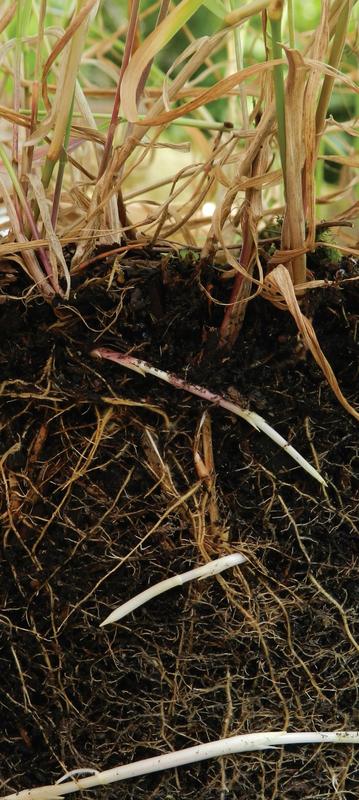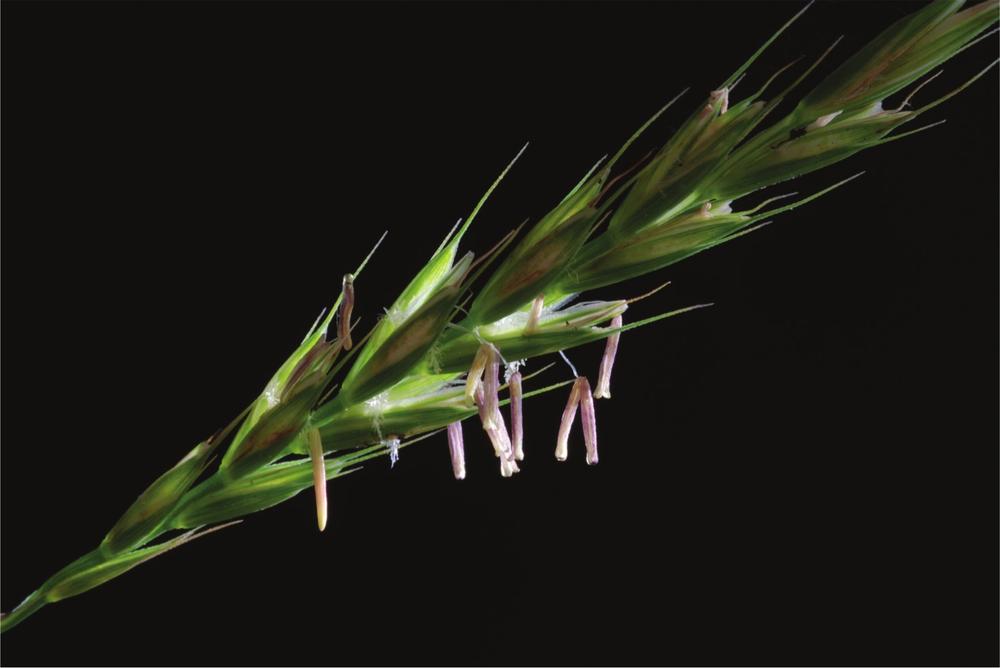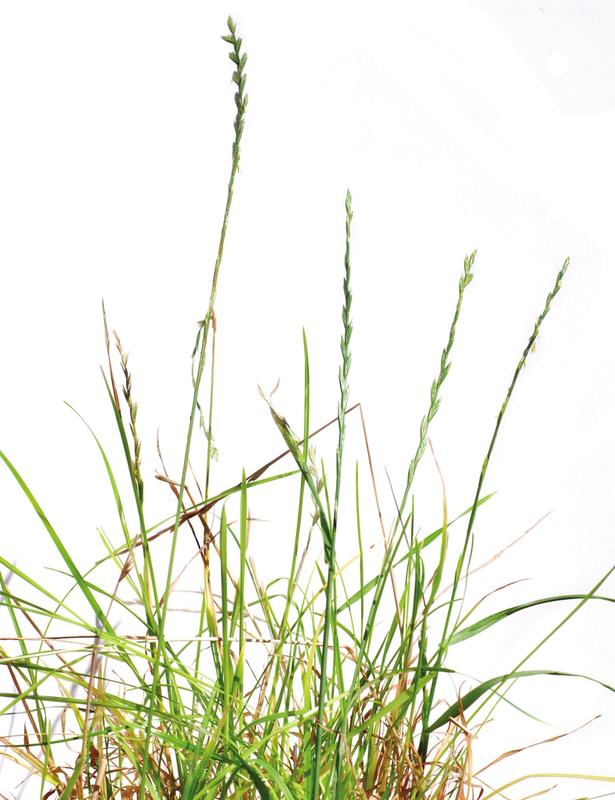This invasive grass is both gardener’s foe and herbalist’s friend. The couch grass rhizomes that gardeners hate possess soothing, diuretic and antibiotic qualities that have long been valued for making a tea to treat urinary problems, including cystitis, kidney stones and prostate enlargement.
Poaceae Grass family
Description: A grass, up to 1m tall, with a thin flowering spike, dark green pointed leaves and untidy creeping rhizomes.
Habitat: Lawns and gardens, road verges and fields.
Distribution: Widespread worldwide.
Related species: There are two other species of couch in the British Isles – sea couch (E. atherica) and sand couch (E. juncea) – both found along the coast.
Parts used: Rhizome.
Similar species: The flower spikes of perennial rye-grass (Lolium perenne) look very similar to couch, but the leaves are shinier and there are no creeping rhizomes.
Garden weeds often attract colourful names that leave little doubt about gardeners’ opinions. Couch grass is no exception, its other common names including twitch, quick grass, quack grass, scutch grass, dog’s grass, witch grass and foul grass. It quickly spreads in most soils by vigorous white rhizomes (repens means creeping) just below the surface and forms a strong, dense root network that crowds out other plants.
Yet its herbal use goes back to classical times, and the love/hate relationship must also be as old. Culpeper, in 1653, puts it like this: ‘although a gardener be of another opinion, yet a physician holds half an acre of them [dog’s grass or couch grass] to be worth five acres of Carrots twice told over’.
The name ‘couch’, according to the herbals, derives from an Anglo-Saxon word, civice, for vivacious and long-lasting. Perhaps the herbalists won naming rights here, and it’s best to celebrate the vigour of the plant and hope this might transfer to us when we use it.
A successful colonist in garden and field, as are all of our familiar weeds, couch grass has an almost unstoppable capacity to spread. The pale runners or rhizomes give off side branches at intervals of only a few centimetres, and at each node the plant sends up a new shoot and drops a new web of fine roots. The leading runner is described by one writer as a lance that forces its way through any obstacle, including within your prized blooms. And if you leave the tiniest particle of the plant as you pull it or dig it up, it will invariably grow back.
Couch grass can be confused with perennial rye grass (Lolium perenne), but this has a wavier flower stalk and alternating darkish green spikelets set close to the stalk. Couch grass has distinct, very flat pale green spikes set at an acute angle to the stem.
At least couch grass is valued in dryland Australia, being planted there to create durable golf courses, grass courts and cricket squares. The binding quality of its rooting system has also been embraced in securing sand dunes, alongside specialist sand grasses.
And while gardeners in Britain may curse and burn their twitch, in mainland Europe it has often been used as a food for cows and horses, and sold as a tisane or tea for human use.
Mike Jones, a coffee plantation manager in Kenya for 26 years, used to spend a month a year getting his workforce to dig out the local couch grass by the deepest roots and burn it, or else it would climb to the top of the coffee bushes. When Julie sent him some couch grass, he said: ‘It comes as a bit of a surprise to learn we could have made ourselves a “cup of tea” out of it.’
What has so often been discarded should be more generally valued because it can ease a lot of suffering, and even prevent the need for surgery in some cases. A patient of Julie’s, a keen gardener, said when prescribed couch grass, ‘but I’ve burned wheelbarrow loads of it!’ He resolved to make better use of it in the future.
Use couch grass for…
The same rhizomes that cause all the gardener’s woes are dug up by herbalists, then cleaned, dried and cut into lengths of a few centimetres. Brewed as a tea, the resulting infusion is mild and pleasant to drink.

The white rhizomes of couch grass: ‘a lance that forces its way through any obstacle’

It is an effective and long-proven remedy for cystitis, urethritis and prostatitis, combining anti-microbial action with soothing and diuretic properties. In fact, it is almost a urinary formula all in one herb, as it also helps dissolve stones and gravel, as well as preventing them from building up.

John Parkinson, writing in 1640, said that couch grass (or Quich grasse, as he called it) not only dissolved stones in the bladder, but opened ‘obstructions of the liver and gall’, indicating that it might help dissolve gallstones as well.
But it has wider modern uses too. Commission E, the expert panel that judges the safety of herbal medicines for the German government, has approved couch grass in the treatment of bronchitis and laryngitis as well as for bladder infections and kidney stones. It is also used together with other herbs for gout and rheumatism.
There are various other instances of couchgrass being employed in European medicine for liver and gallbladder problems, including jaundice.
Dogs and cats will seek it out as a natural purgative (hence ‘dog’s grass’). Horse owners add couch grass rhizomes to feed to improve their horses’ coats.
Couch grass is untidy in habit, with dead brown leaves typically growing in a clump alongside the flowering spikes, as the image opposite shows, but in supporting its claim on your attention, we invite you to take a look at the geometric beauty of the flowers in close-up (above).

Couch grass tea
The rhizomes can be dug up any time of year, but are best harvested in the spring or autumn. Wash them well, cut into short pieces and then dry them.
Use 2 heaped teaspoonfuls of dried rhizome per mug of boiling water, and let steep for 10 minutes. Strain and drink, three times a day.